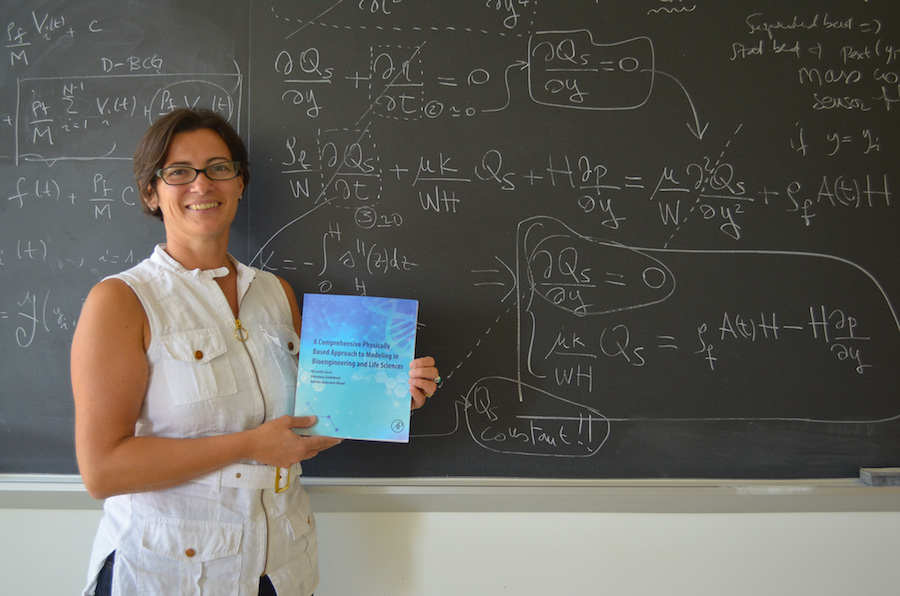What do you do when there’s no textbook that fits the exact, unique nature of your course of study and research? You write your own.
Giovanna Guidoboni, MU professor of Electrical Engineering & Computer Science and professor of Mathematics, did just that. She and her colleagues — Riccardo Sacco and Aurelio Giancarlo Mauri from the Politecnico di Milano (Italy) — wrote A Comprehensive Physically Based Approach to Modeling in Bioengineering and Life Sciences, published by Elsevier in July.
Additionally, she founded the Journal for Modeling in Ophthalmology to promote research that lands at the intersection of math, computational modeling, ophthalmology and more.
Guidoboni is an expert in computational modeling, particularly when it comes to fluids. She’s done extensive work related to fluids in the body, especially blood flow in the whole cardiovascular system and in specific organs, including the eye.
Doing research on the cardiovascular system and the related fluid dynamics, however, requires a multidisciplinary approach. And there was no textbook that was written in a way that was useful to students interested in the topic, all coming from a variety of backgrounds in engineering, medicine, physics, life sciences and more.
The problem is that books written with a focus on one of these groups did not have the appropriate kind or quality of information for a holistic approach. And various journals often turned away submissions in this field because certain aspects were not considered rigorous enough for researchers of other backgrounds.
“Most of the books in math are for mathematicians, the books in biology for biologists, the books in engineering for engineers,” Guidoboni explained.
“When we want to model something going on in the human body, we need to use elements of physics — motions of fluids, fluid dynamics. But we also need the motion of ions, neuron activity, electromagnetics. We need to teach students a summary of what they’d study in different courses that very often are not put together.”
The monograph took three years to write, with each person contributing their expertise to the 852-page manuscript. But the idea for it germinated well before, back when Guidoboni began her teaching career, and its necessity only grew as she moved from Indiana University to the University of Strasbourg in France to Mizzou.
“Overall, the single topics are not new, but you find that different courses and different books explain the topics in a different scientific language, so when you try to put them together, it’s a mess. I know from experience because I’ve taught it over and over again to my students,” she said.
The different ways researchers from varied backgrounds talk about the same exact topics can be vastly different, which created some initial consternation in the writing process. But once the trio was able to bridge that divide, it became easier to write in a way students could understand even though they’re coming at the problem from different angles.
“The goal of the book is to give you the rationale and instruments to use to develop your own virtual lab for a problem of interest to you,” Guidoboni said. “The book is full of examples that one can work out by hand or by running Matlab programs, which are also provided in full in the book. Most of the examples stemmed from the urge to clearly explain to each other (i.e. the authors) the full meaning of the theoretical content on which some of us, but not necessarily all of us, were experts on. As we were the first to learn from each other, we truly believe that readers will too.”
